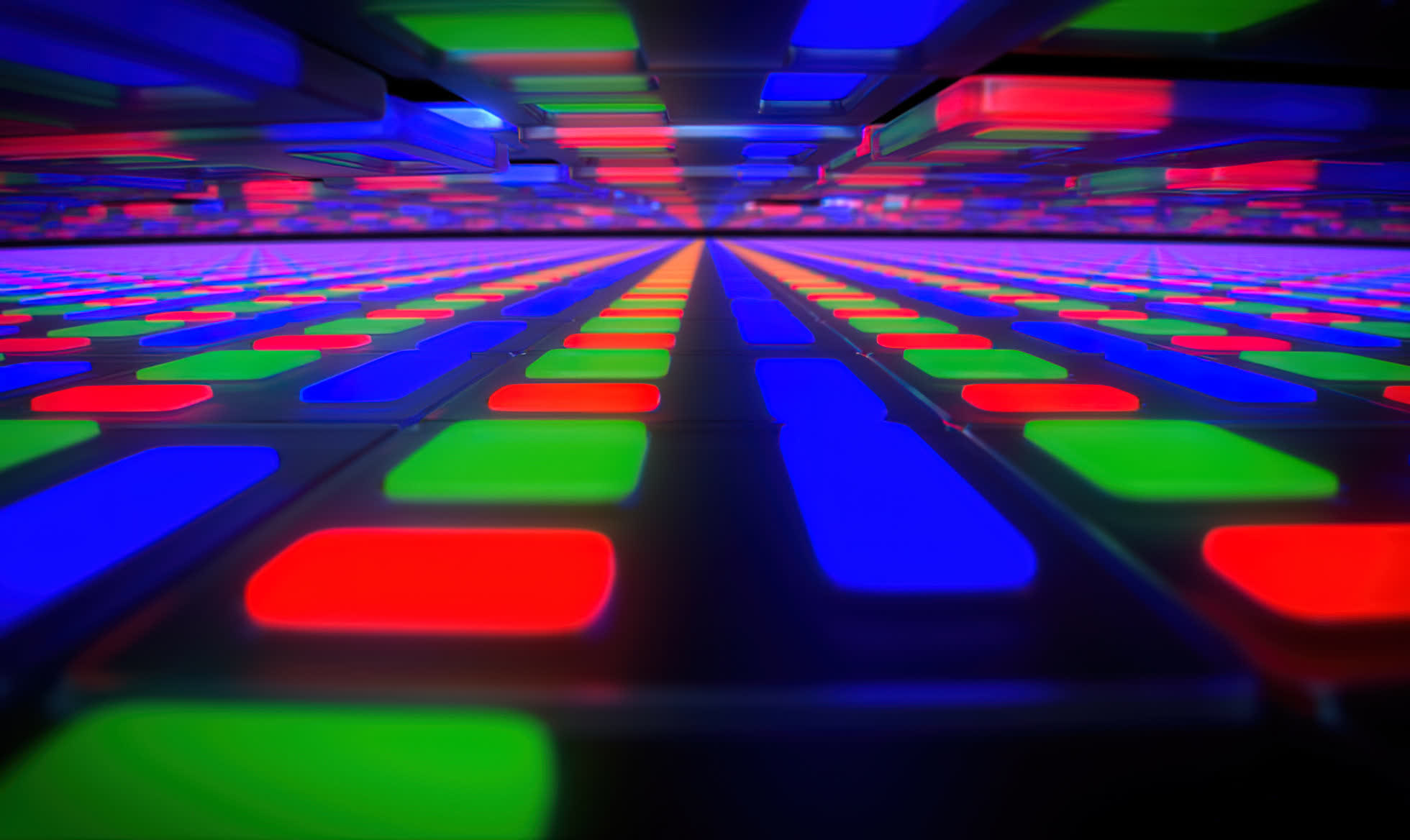The big picture: Among the three pixel colors found in OLED displays, blue stands out for its inefficiency and shorter lifespan compared to red and green pixels. But now LG claims to have cracked that code using a combination of tandem OLEDs and a mix of blue phosphorescent and fluorescent materials. This innovation will lead to better efficiency and improved image stability over the display's lifespan.
LG turned heads when it released the first 55-inch OLED TV back in 2012. OLED technology is renowned for its impressive image quality and low response time compared to LCDs. However, there are some disadvantages, such as high costs and image burn-in. Burn-in occurs when static images (e.g. the Windows taskbar, news tickers, game HUDs) are displayed for an extended period, causing pixels to degrade faster and leaving behind "ghost" images.
Display manufacturers have developed various methods to mitigate burn-in, including pixel dimming on static images to reduce pixel strain and pixel shifting, which slightly moves pixels at regular intervals.
One of the main contributors to burn-in is the blue pixel and how it emits light compared to red or green pixels. OLED pixels are composed of organic material that emits light by either phosphorescence or fluorescence. Phosphorescence is generally more efficient and can degrade more slowly. Red and green pixels in some OLED technologies use phosphorescent emitters, while blue pixels typically emit light through less efficient fluorescence. Because blue pixels require more power to achieve similar luminance to red and green pixels, they degrade faster, contributing to burn-in issues.

LG's "Dream OLED" addresses this challenge by using a two-stack tandem structure, which layers the OLED light-emitting elements. This stacked design employs both fluorescence and phosphorescent materials for blue light. LG estimates that Dream OLED will deliver a 10-20% increase in display efficiency. This improvement in efficiency will reduce pixel stress and extend the lifespan of the blue pixels. Universal Display Corporation, a U.S.-based display material manufacturer, is supplying the blue phosphorescent material.
Also see: The OLED Burn-In Test: Burning It on Purpose
Tandem OLED technology might sound familiar, as Apple introduced a similar concept in their 2024 iPad Pros. Apple's approach involves stacking two OLED layers, which improves brightness and lifespan but doesn't directly address the blue pixel issue. If LG's efficiency estimates are accurate, it's not far-fetched to think that phone makers could be the first to adopt this battery-saving feature.
So, when can consumers expect to get their hands on Dream OLED? According to an industry official, "We plan to evaluate the performance for mass production within the year and review commercialization." While the public may have to wait at least a year or two to see the fruits of LG's efforts, the future of OLED looks bright.
